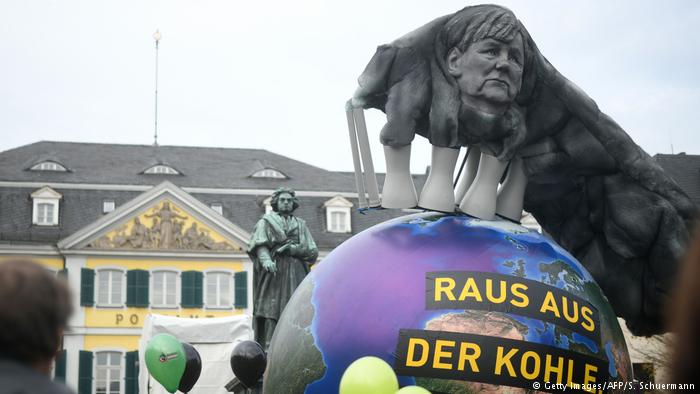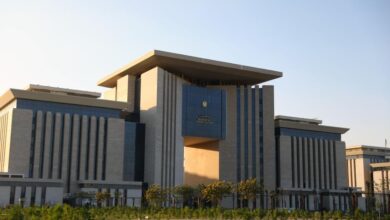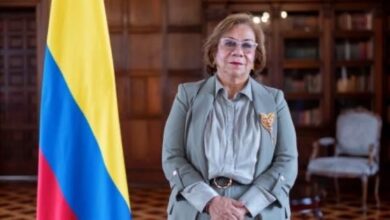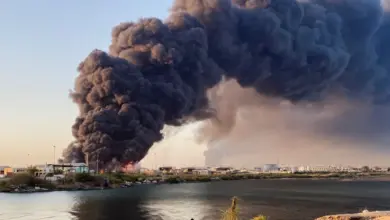
The Paris Agreement remains on track. Talks in Bonn went 12 hours into overtime as participants reached an agreement on climate finance. But now comes the tough part.
The bar was low for this year’s United Nations climate summit in Bonn — anything keeping the momentum of the Paris process going was to be deemed a success. And after two weeks of steady progress, delegates can leave Bonn pleased with the results.
Delegates did wrestle with a few sticking points late into the night. Early morning Saturday, a compromise was reached: Industrialized nations conceded to developing countries that the adaptation fund from the Kyoto Protocol would indeed become a part of the Paris Agreement.
Transparency and reporting, or how to measure the greenhouse gas emissions of member states to the Paris Agreement, was also a point of discussion.
“The Bonn climate talks were foundational,” said Paula Caballero, global climate director at the World Resources Institute. These talks are “paving the way to finalize the rules that underpin the Paris Agreement next year, and setting the stage for countries to commit to enhance their national climate plans by 2020,” she continued, calling the Bonn talks “a success.”
“We’ve done the work we came here to do,” German Environment Minister Barbara Hendricks told DW.
Though the Paris Agreement was signed two years ago, rules for this new global energy framework have not yet been set. That climate treaty rule book is due to be adopted at next year’s UN climate summit in Katowice, Poland. The main focus for this year’s summit was to set pen to paper, and create a starting draft for the rule book.
A long process
There will be many more drafts to come, as working-level negotiations take place over the coming year.
But as Alden Meyer from the Union of Concerned Scientists put it, “at this year’s climate talks, the Fijian presidency helped us build the vessels needed to carry us towards a clean energy future. Now, it’s up to ministers and heads of state to fill these vessels with increased ambition on climate action.”
Delegates also signed off on the “Talanoa Dialogue,” a roadmap to accelerate climate action at regular intervals. This roadmap, which will be in process over the next year, “should help countries bridge the gap between what they have committed to do and what is needed to keep temperature rise to safe levels,” said Wendel Trio, Director of Climate Action Network (CAN) Europe.
Still, there is concern that Bonn only accomplished the bare minimum of what was necessary to keep the Paris process going, but did not accelerate progress. “Right now we’re moving at a brisk walk, so all countries will need to really pick up the pace from here,” said Brazil’s environment minister Sarney Filho as he left the summit. Brazil was selected this week as the host for the UN climate summit in 2019.
Pre-2020
One of the most contentious issues that bogged talks down in Bonn was the debate over whether efforts to cut emissions and come up with financial support before 2020, when the Paris Agreement terms start, should be included as part of the legal text.
Developing countries had pushed for this inclusion, but developed countries had been resisting. In the end, developing countries led by Brazil and China won the day, and some pre-2020 actions were included in the text.
“Efforts by developed countries in Bonn to sideline the issue of pre-2020 was a major concern for Brazil,” said Filho. “We’re pleased that issue is now back on center stage, but now we will need to see words turned into action.”
Climate campaigners were also concerned about the resistance being shown by developed countries, and the reemergence of the “common but differentiated responsibilities” debate, which many thought had been settled.
That issue is over the degree to which developing countries should have less of a responsibility to fight climate change, particularly financially, because they contributed to it less historically. Industrialized nations resisted this concept.
Behind the scenes
What was perhaps most important at this year’s summit was what happened behind the scenes — or what didn’t happen.
No other country joined the US in threatening to walk out of the agreement. In fact, news that the last straggler, Syria, agreed to join the Paris accordwas one big surprise.
The United States delegation was quiet — its sole official side event promoted fossil fuels, and ended up getting crashed by activists. And the biggest US presence at the summit was the We Are Still Incoalition of American political, business and religious leaders, who vowed to stay loyal to the Paris goals and are working hard on local climate action that can help make up the difference for US emission reductions President Trump will presumably never fulfill.
“Outside the negotiating rooms, a broad range of voices continue to show strong support for climate action,” said Caballero. More than 320 major companies, including HP, Mars, and Wal-Mart, will set science-based emissions targets.
And the Global Covenant of Mayors has brought together 7,500 cities and local government, which can potentially reduce the equivalent of 1.7 billion tons of emissions.
“While the US official presence was subdued in the negotiations, the surge of subnational action in the US is undeniable,” Caballero added.
A recent report found that a coalition of US states, cities and businesses — equivalent to more than half of the US economy and population — can meet America’s Paris pledge without federal action.
Coming up on the climate action agenda is the One Planet summit, including participation from the UN, European Commission, C40 Cities and OECD, among others, in Paris starting December 12.
The next “intersessional” negotiation at working level is scheduled to take place in may of next year.
Miguel Arias Cañete, the EU’s climate chief, said he thinks another intersessional will have to be scheduled in order to be ready to adopt a rulebook in one year’s time. “It will be a challenge for the Polish COP,” he said.




